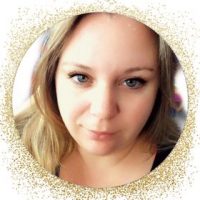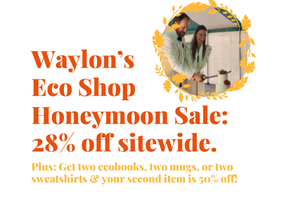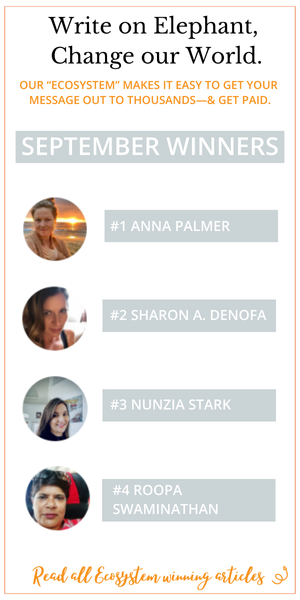The holiday season is a time for reflection, gratitude, and dreams.
My list of appreciation looks a little different this year.
At the top of my gratitude this year isn’t the usual.
As always, I am so grateful for being a mamma—M and C give my life purpose, adventure, and love. But that’s not at the top of the list. It isn’t having my partner of 18 years—who continues to journey this life with me while we create a beautiful existence. While the people in our circle are vital to our existence, and they offer so much love and connection, they aren’t at the top either. And although I am grateful for our health, this also isn’t number one. Neither is our warm home, clean water, and food.
At the top of my list isn’t actually any other person or material thing.
It’s me.
I’m thankful for me.
I’m a b*dass. I am changing generational cycles and creating a beautiful life for my children. I am doing the inner work of healing and rising above my station. I am motivated to do better and be better. To change the lives of those around me by showing kindness, compassion, and love. Operating from empathy instead of judgment.
To write that I am grateful for myself feels so weird and selfish and gross—on the surface level, anyway.
As a young human who endured years of trauma (extraordinarily stressful events that shatter your sense of security, making you feel helpless in a dangerous world), I learned that putting myself first was a bad thing. I created survival systems after I showed big emotions and was shamed for them. I endured moments when I thought I was with loving, genuine people, only to find out I was the topic of conversation when I left the table. Starved for connection, I remained in these toxic relationships. I voted parts of myself off the boat instead of releasing those with their own unhealed wounds and flawed views.
I devoured information from books, movies, and media to crack the code on how to live a happy, safe, rich life.
I was seven years old when I’d learned the following conditioning: work hard, be witty, don’t be big—physical or emotionally, absorb the discomfort of those around you, and allow your heart to be stomped on—people seemed happier and easier to please when you didn’t bring up how they’d hurt you.
So, as I grew up, I knew I was resilient enough to quietly piece myself back together—if I silently suffered through their outbursts, maybe they wouldn’t leave me.
These toxic beliefs ruled my journey for more than 22 years and created traumatic cycles that severely altered the way I lived. According to Bessel Van Der Kolk, M.D. and his book, The Body Keeps the Score: Brain, Mind, and Body in the Healing of Trauma:
“Research…has revealed that trauma produces actual physiological changes, including a recalibration of the brain’s alarm system that filters relevant information from irrelevant. We know that trauma compromises the brain area that communicates the physical, embodied feeling of alive. These changes explain why traumatized individuals become hypervigilant to threat at the expense of spontaneously engaging in their day-to-day lives…help us understand why traumatized people so often keep repeating same problems and have such trouble learning from experience. We now know that their behaviors are not the result of moral failings or signs of lack of willpower or bad character—they are caused by actual changes in the brain.”
After hitting rock bottom in 2017 and looking into the confused, innocent eyes of my seven and two-year-old daughters, something had to change. I no longer wanted to live a life that felt heavy, impossible, or not enough, where I was angry or sad on the inside while appearing deceivingly successful on the outside.
I had a beautiful home with a large yard, two healthy, happy, thriving children, and a group of friends that others coveted. I had a profitable career that allowed me to stay home. Why would I need to change?
Because I was slowly dying on the inside—suffocated with the need for approval, and because there was nothing left of me for anyone to abandon. Just like I had as I grew up, I again sought resources and tools to discover a different way of living.
Through years of therapy and consuming the works of so many courageous souls who shared their remarkable journey to healing, I began analogizing my life to Lake Superior. This inland sea is calm on the surface and intense below—a profound beauty in the depths that can put on one helluva show during a storm.
I am learning that the beauty of life is flow. I no longer endeavor to control the water or who is in the water with me; rather, I focus my energy on steering my metaphorical ship toward the safe harbor of my values: authenticity, connection, abundance, and faith. Faith in myself, in the universe, in healing, and in my knowing. Love is my fuel.
This is where my story begins. I am searching beneath the conditioning and the surface of my life to learn a new, free way to exist.
So here, on the surface, where the water is so shiny, calm, and comfortable for others, is really my conditioning, and how I have learned to survive.
When I say things like, “I am grateful for me,” it causes a disturbance in the glasslike water. People around me look questioningly: Why are you grateful for you? You’re a burden. You offer no value. Look at all the ways you’re not enough, the ways you do not belong. I can feel my heart breaking at these harmful interpretations. I want to sink beneath the surface, bury myself in the depths of the water, and hold their views as truths.
But then I remember the parts of me that have been abandoned and pushed below the surface. These fragments are here because I took the words of others as facts. And in order to survive with these “facts,” I had to cast away the parts of me that knew different but didn’t have the tools to keep us whole. These sacrificed pieces of myself, with their unmet needs lovingly supported the weight of the woman who fought to survive, but grew weary after so many years of abandonment.
Little by little, a deep knowing has arrived—that this way of life wasn’t surviving, that it was slowly killing me. I’ve learned that losing myself is a far worse pain than losing those around me. I had to release the people and situations that I allowed to cling to me. They took deceivingly comfortable breaths in the choppy waters—but they had to learn to swim. I had to learn how to release my addiction to toxicity and codependence.
The woman on the surface felt guilt and sadness for the girls and women she’d been in the past—who had been keeping her above water. She tried learning how to swim to lessen the weight on their shoulders. But she only grew tired.
The ones below felt an urge to swim toward the surface, themselves, abandoning the one above. But that deep knowing called out and said: Instead of swimming apart, how can we come back together?
And so, little by little, I found tools to stop the suppression of these hurt parts of myself, and this gave way to exploring what it would be like if ones with the unmet needs were heard, seen, validated, loved, and understood.
The first learned tool was to feel all the emotions—I allowed waves of it to wash over me. For the first time, I acknowledged their existence and I sat in the messiness of my life. I leaned into what it means to be a human being. I no longer tolerated inexcusable behavior from others. I leaned into the rage that simmered, helplessly cried as the sadness purged from my leaking eyes, and reacted to the pain that broke apart my heart. I spoke unfiltered realities and screamed at the top of my lungs so that people would finally hear me.
After a few months of reacting and hurting those around me with cutting words, I knew that, again, something had to change. The scales tipped from being hurt to offsetting that pain with more pain. This wasn’t the solution. It was a tiresome cycle, and one I was not interested in participating in. I had to find a way to channel these urges, to honor the emotions, not hurt others, and live presently.
Later on, I discovered emotional intelligence. I listen to my emotions and feelings and respond (instead of react) to the situation. I use these messages of energy as a navigational system. Anger tells me that I am giving my power away. Sadness tells me that I am doing more of what depletes me than what fills my soul. Guilt, shame, and regret beg to be shared in a safe space, with trusting people, to help unravel the tangled mess of life. I am learning to separate past from present, and I’m shining light on which parts need to be let go of and which need accountability and action.
My next tool was listening to motivational speeches on YouTube in the morning. Les Brown, Tony Robbins, Gary Vee, Danielle LaPorte, Brené Brown, Glennon Doyle, Marie Forleo (and then, woah, discovering podcasts). They all had a powerful message—you are in charge of your life. You aren’t responsible for other people’s feelings or actions. Morning routines change your life. I learned about the Law of Attraction, vibration, the wounded child, gaslighting, and trauma. I learned that tough times don’t last, that grace for our humanness is necessary to move forward. Life isn’t about successes or failures, but experiences and learning. I journaled daily and religiously wrote out lists of things I was grateful for and appreciated in my life. Because if I couldn’t find the enoughness of life, here in this brutal and beautiful existence, I wouldn’t find happiness either.
These conversations opened a portal to more beautiful words written by people who had experienced similar defeats but who made the mess their message. Danielle LaPorte’s “Firestarter Sessions” and “Desire Map” changed my life. Does my choice bring me closer to or further away from how I want to feel?
Hal Elrod’s “Miracle Mornings”—yes! I learned about being intentional with your time, energy, and focus, and choosing where your day goes. Then I discovered the fresh breath of air that is Glennon Doyle. Love Warrior—that book, that beautiful collection of her valleys and peaks, was a roadmap from “not this’” to freedom. From being afraid of the pain to learning to ride the waves of the pain and rising again.
And then I discovered Brené Brown, a woman who spoke of wholehearted living, of boundaries, and of shame, guilt, fear, worth, beliefs, and conditioning. She taught me that the cheap seats—the ones not in the action alongside me—don’t get to tell me all the ways I’m doing life “wrong.” And the vulnerability I displayed wasn’t a weakness, but a super power.
Setting boundaries was the rescue line stretching from the person I was on the surface to my other selves below. My therapist told me, “your feelings, experiences, and thoughts matter—all of them.” I was 29 years old. She told me I am human and worthy of connection from the people in my life—I didn’t have to set myself on fire to keep others warm. The people I allow in my life should be concerned with helping me see the light instead of extinguishing my flame. She reminded me that mental health is equally as important as physical health. Feelings and emotions are a normal part of being human. The power is in figuring out how to process and respond to the urges. PTSD, anxiety, and depression are all things that shape my present experiences, and I must learn how to navigate life with a healing brain and soul.
Those words and new beliefs loosened the irons around my entire being.
As I discovered more about worth, self-love, respect, narcissism, and comfortable peace, I was surprised; I thought it was about figuring out how to swim to the surface. What I actually discovered was that these new beliefs built a raft. Tool by tool and log by log, a floating respite came to existence. This raft, bound together by a deep knowing and divinity, was a place where all iterations of who I was and am sought relief, connection, excitement, and love. We weren’t looking outward for comfort and survival, but to each other and within for the knowing. As more were rescued from the depths below, the more powerful and whole we grew.
Eventually, the raft became a large ship. We reveled in the safety that this vessel afforded. It did not matter how turbulent the waters were—we were becoming skilled sailors and, collectively, a divinely guided being. Our lighthouse directs us safely back to the harbor as needed—a place where we radically rest, taking easy breaths, calm in the lulls of the harbor.
This took time to learn, to grant ourselves the permission to dock safely, while replenishing our resources and reconnecting to our beliefs.
We no longer stay in the rough waters, hustling for our worth. We don’t engage in battle anymore. We no longer bellow a battle cry that says: We’re worth it. Please love us. We are loyal, capable, and valuable. Look at what we have done. Look at the ways I love you. Please don’t focus on the things I am not, but what I am.
Instead, we show up whole. Fierce. Loving. Capable. And ready to create beautiful experiences together. To guide toward peace and calm. Prosperity. Connection. Togetherness.
We know, now, that we no longer need to drown ourselves to keep others in our life.
I learned that the illusion of those years of just surviving was never that there were other parts of myself who kept me above water in those raging waters. It was always the whole of me.
So when I review my pains, traumas, toxicities, and chaos?
I am so f*cking grateful—for me.









Read 3 comments and reply